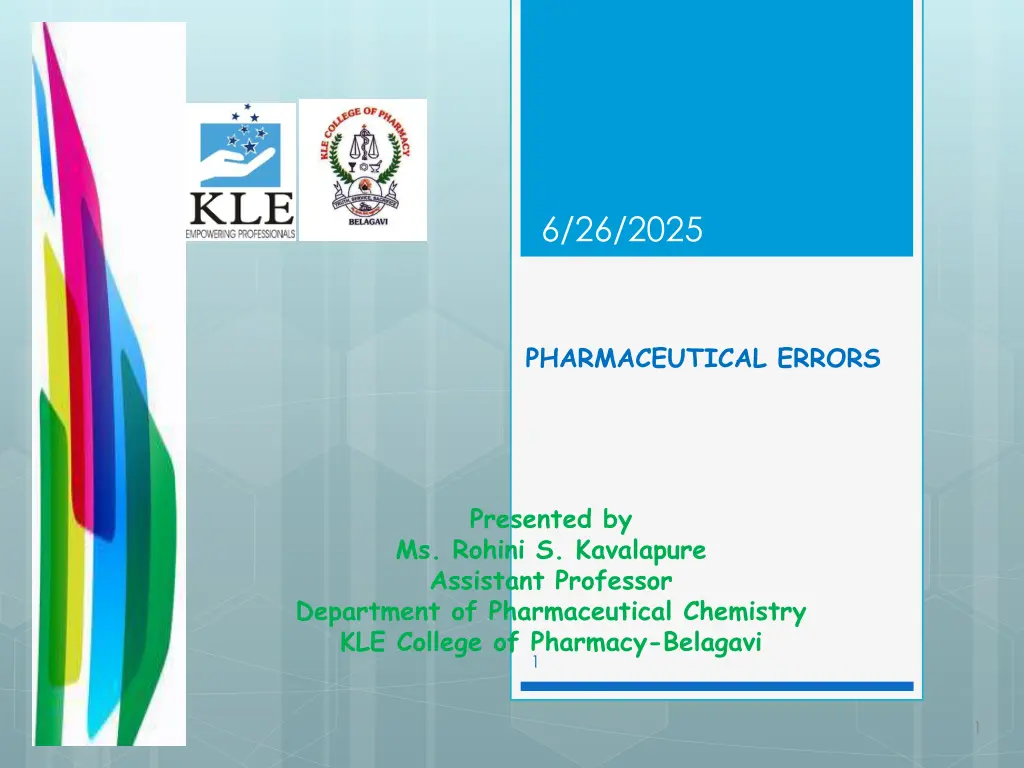
Understanding Pharmaceutical Errors
Get insights into pharmaceutical errors including determinate and indeterminate errors, types of errors, and methods to minimize errors in the pharmaceutical industry. Learn about the importance of accuracy and precision in measurements.
Download Presentation

Please find below an Image/Link to download the presentation.
The content on the website is provided AS IS for your information and personal use only. It may not be sold, licensed, or shared on other websites without obtaining consent from the author. If you encounter any issues during the download, it is possible that the publisher has removed the file from their server.
You are allowed to download the files provided on this website for personal or commercial use, subject to the condition that they are used lawfully. All files are the property of their respective owners.
The content on the website is provided AS IS for your information and personal use only. It may not be sold, licensed, or shared on other websites without obtaining consent from the author.
E N D
Presentation Transcript
6/26/2025 PHARMACEUTICAL ERRORS Presented by Ms. Rohini S. Kavalapure Assistant Professor Department of Pharmaceutical Chemistry KLE College of Pharmacy-Belagavi 1 1
WHAT IS ERROR ??? Error = Measured mean value True value Accuracy Precision
Types of errors : 1.Determinate /Systematic errors 2.Indeterminate / Random errors
DETERMINATE (SYSTEMATIC) ERRORS: These are errors that possess a definite value together with a reasonable assignable cause; however, in principle these avoidable errors may be measured and accounted for conveniently.
TYPES: (a)Personal Errors (b) Instrumental Errors (c)Reagent Errors (d)Constant Errors (e)Proportional Errors (f)Errors due to Methodology (g)Additive Errors
INDETERMINATE (RANDOM) ERRORS: As the name suggests, indeterminate errors cannot be pin-pointed to any specific well- defined reasons. They are usually manifested due to the minute variations which take place inadvertently in several successive
METHODS OF MINIMISING ERRORS: Calibration of Instruments Blank Determination Cross-checking Results by Different Methods of Analysis Method of Standard Addition






















